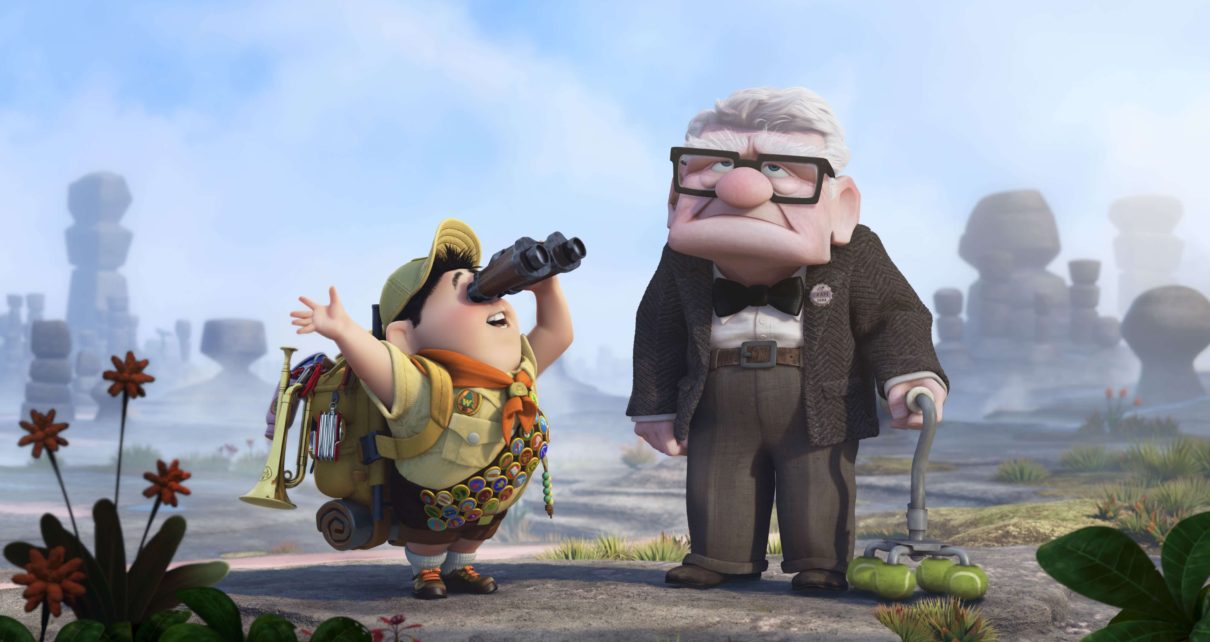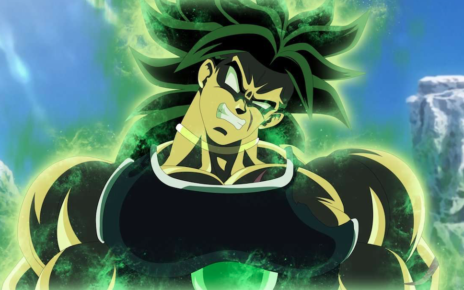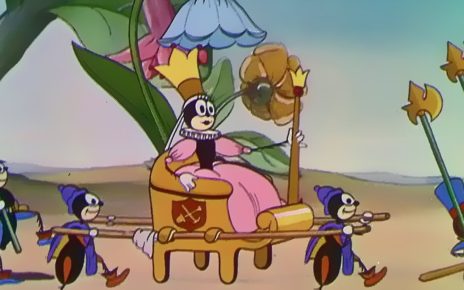Let’s start with a confession: I didn’t actually first watch Up until several years after it came out on May 29, 2009. I turned 13 that year, placing me in the epicenter of that defensive tween phase when you try your best not to watch Pixar movies — before you grow up and realize they’re actually pretty great. Since then, though, it’s become one of my favorite Pixar features — second only, perhaps, to Ratatouille — and not just because of its gorgeous art direction, wacky action sequences and adorable animal sidekicks. (Although, on a tangent, Doug is a freakily accurate portrayal of what would happen if a Golden Retriever could talk. Disney put Up-style collars on some real retrievers for a viral prank and the results are almost uncanny.) But the thing about Up which has really stuck with me, over the years, is its sincere and dedicated portrayal of loss and love.
Right from the opening, Up devotes a sizable chunk of its screen-time to setting up the emotional cornerstone of the film: the love story of shy balloon salesman Carl Fredricksen and his vivacious wife, Ellie. The film charts their path from a childhood friendship built on daydreams of adventure to their growing old together in a house they built, along with everything in between.
However, after Ellie’s death — one of the most heartrending sequences in any Pixar film — Carl becomes reclusive and antisocial, hiding his grief and settling into the role of the local cranky old man. It takes an improvised balloon trip to South America, an unexpected stowaway (the film’s second protagonist, the chirpily optimistic boy scout Russell) and a meeting with a childhood hero that doesn’t quite go as planned to make Carl start to open up to the possibility that life might have more adventures to offer him.
As anyone who’s seen even a poster from the film can tell you, the central conceit of the film — a house lifted airborne by a bunch of balloons — is zany to the point of absurdity. Try to shut down the part of your brain that might wince at this and other overblown flights of fancy; if you just shrug and go with it, Up is an incredibly fun ride, taking every opportunity to relish its own wackiness. A decade later, the animation still has an incredible visual breadth: the wide open spaces and screaming colors of the vibrant South American landscape, for example, are utterly at odds with the cramped, desaturated interiors of Carl’s widower home only a few scenes earlier. As you might expect, the imagery of balloons remains key throughout. They are present in both big set-pieces, like the rainbow flood that pour into the air during the house’s liftoff, and tiny intimate moments, like the single balloons that the Carl and Ellie use to float messages to one another. They’re present at every important beat of the story, representing Carl’s connection not only to Ellie, but to their shared dreams of adventure.
For such light and whimsical objects, the film’s balloons are laden with a great deal of emotional baggage. Indeed, when I rewatched Up, the thematic heaviness of Carl’s memories and emotions is one of the elements which struck me the hardest. Carl is weighed down by grief: He’s convinced that he not only can’t continue to enjoy life after Ellie’s death, but that he shouldn’t. To look forward at a future without her, rather than back at their shared life, would be a betrayal. Although he is a fundamentally loving and gentle character, his weariness and self-reproach causes him to spend much of the film convincing himself, and others, that he has no interest in the world around him beyond a tying-up of loose ends.
However, it seems that the world has other plans for him. Once he encounters the bizarre inhabitants of paradise falls — and develops a paternal bond with his young neighbor Russell — Carl eventually realizes that he still has much to offer in life, and life still has joy to offer him. In the end, he succeeds where the antagonist Muntz fails: by letting go of the familiar weight of the past and sailing into the unknown.
Although some might find Up’s comedy jarring when woven into this deeper emotional context, I relate to Up despite — or perhaps, because — of its dizzyingly wide emotional range. It’s an accurate reflection of life after grief: Even when you’ve lost someone important to you, life goes on in all its chaotic, serendipitous absurdity. It can feel offensive and unfair, and it can make you angry and bitter, like Carl. But Up reminds us that there’s joy and beauty to be found, too, even though it may seem unbearably bittersweet at best.
Of course, all this praise is not to say that Up is a perfect film. I am exasperated by Ellie’s relegation to the role of collateral angst (and the film is an epic Bechdel fail, by the way, with the only other female character being a giant bird). The relentless Pixar quirkiness and increasingly ridiculous action sequences can become overwhelming. But I have ended up looking past these faults because Up’s foundational story is simple but sincere. It is this which means that it continues to resonate ten years later.
For me, a key part of the animation’s emotional foundations is its wonderful score, composed by the legendary Michael Giacchino in his third collaboration with Pixar. Because of the soundtrack, moments which might otherwise be jarring or cloying hit their mark head-on — as, for example, in the film’s famous “married life” sequence, which has brought tears to my eyes more than once.
At the beginning of this article, I mentioned that I didn’t discover Up until a few years after it came out, when I was already in high school. As a matter of fact, I first watched Up during a period when I had just lost a friend of about my age, very unexpectedly. It was probably the first time in my life that I had experienced that kind of grief, and so I eagerly latched onto Up’s messages about the nature of loss and its aftermath. Director Pete Docter has stated in interviews that this was his hope when making the animation:
“…The message of the film is that the real adventure of life is the relationship we have with other people, and it’s so easy to lose sight of the things we have and the people that are around us until they are gone…So, if you can kind of wake up a little bit and go, “Wow, I’ve got some really cool stuff around me every day”, then that’s what the movie’s about.”
Much has been made of Pixar’s more recent film Inside Out for its potential as a starting point to spark discussion about emotions and mental health with children. However, I imagine that for many young people, Up has fulfilled a similar role in starting conversations about grief and the death of loved ones — as it certainly did for me. Unfortunately, real life never ends with the ‘happily ever after’ — Up is a film about what comes after that, and how to move forward, onward and upward. For that reason, I think that it rightly deserves its reputation as one of Pixar’s classics.
Thanks for reading The Dot and Line, where we talk about animation of all kinds. Don’t forget to follow us on Twitter and sign up for our newsletter.





